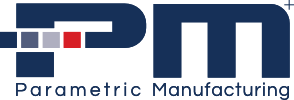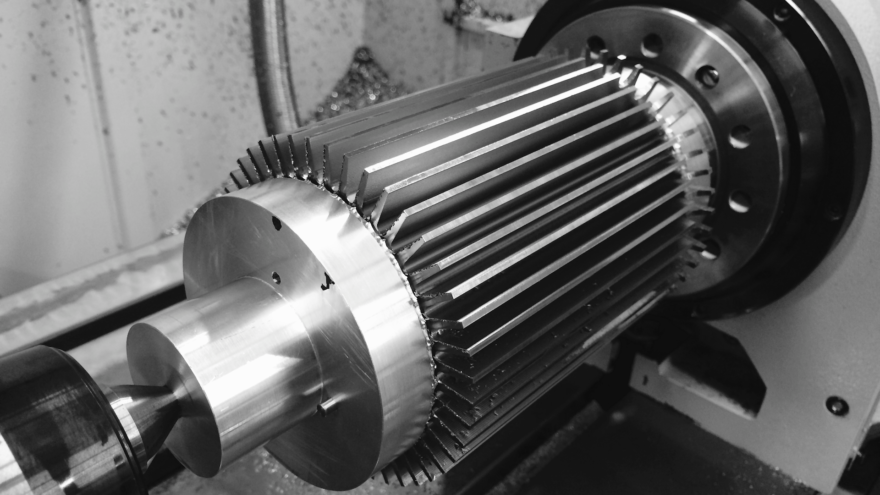What Manufacturing Process will be Used First?
Ask yourself this simple question before you start. Design for the first manufacturing process while employing skeletal modeling methods to enable you to add/subtract features for the next step of the manufacturing process. Your design is going to change a thousand times, make it easy on yourself to do that. Like I’ve said before, consider where you are in the development cycle and follow The 3 Axioms of DFM (Design for Manufacturability). Don’t put yourself into a high-cost design situation early.
It’s best to adopt a mindset to design multiple versions/configurations for each step of the product development cycle. With today’s software, it’s easy! Check out Solidworks configurations for example. If you use another platform, they have the same capabilities. If you do this and track the dollars saved as a result of your efforts, you’ll be poised to show management the extra value you bring to the table come review time; I’m sure very few of your colleagues are doing this, hence you really will be engineering like a boss.
The Fastest Development Cycle
- 3D print or SLA it to hold it in your hands to identify gotchas, fit it up and discover the big mistakes; iterations may be needed.
- CNC machine it for functional testing with real-world materials, accuracy and finish; iterations may be required.
- Low-Volume market testing in quantities of 5-500, the most cost-effective approach to avoid expensive tooling is CNC machining. Plus, the market will tell you what you need to change. If you tooled up too early and then need to make changes because the market requires it, you just cost the company tens of thousands of dollars; you are engineering like a student, not a boss.
- Production – Cast aluminum, zinc cast, plastic injection molding, extrusions plus CNC machining and more are all viable methods and highly dependent on the upfront available budget for tooling.
If you can consistently execute each one of these steps one after another (one iteration per step), you definitely Engineer Like a Boss. In this article I will cover steps 1-3; production will be covered in a follow-up article. Check out our Quick Guide to CNC Machining Prototype & Production, which breaks down the details of when CNC machining makes the most sense for any of the 4 steps above.
3D Printing & SLA
By far the easiest to design for and the most dangerous. Why? Well, it can pretty much make any design, which then sets in stone features and part geometry that can be impossible to manufacture later and more expensive.
Be very careful. However, it is the most powerful tool you can use to flush through your design concepts. If you have a decent 3D printer within arm’s reach, you can flush through a single part design in less than a week, easily.
- Make sure you hollow out solid sections for significant savings.
- Add ribs, gussets, and support where needed for thin walls.
- Expect parts to crack and break easily, regardless of what the service provider claims.
- Make sure your minimum wall thicknesses are in the 1.5mm or .030″ thickness range, otherwise…snap, crackle, pop! It’s going to break.
- Don’t design in the threads. Add proper pilot holes and tap your threads carefully.
- Make a mental note that edges which have radii may have to change to chamfers or be removed to save costs later
CNC Simple Design Guideline List
If items in the list below do not make sense, please visit this past article for a brush up on the basics: How to Design Low Price Machined Parts and Why?
- Are there any rectangular or angular internal shapes with sharp corners? Re-design per this article, “What A Relief“.
- Are there any drafts that you may have designed in for die-cast, plastic injection molding, etc. too soon? If yes, remove them.
- How many times do we have to flip the part to machine all the features? If it’s greater than 2, then it’s not cheap and easy to make. Do everything you can to make it a 2 operation part.
- Are there weird angles or single features that would require a fixture to set the part up at an angle or require an unnecessary flip of the part? Design them out or try to augment the design so the feature can be included in a previous operation.
- For example, a simple fluid port on a pump cover is located on the side of the part at 45 degrees. That creates an additional set-up operation when maybe you can move it to the top or bottom face of the cover and use a 45 Degree angled fitting?
- Cost reductions in cases like this are significant!
- Are there 3D Surfaces that do not play a functional role? Remove them, this can make your part extremely expensive.
- Are there external radii on edges that are not functional? Remove first, replace it with chamfers at a minimum if possible. Visit The #1 Killer to a Low Price CNC Machined Part
- Do pockets have radii along the bottom that require a ball end-mill to the machine? Are they functional to the performance of the part? If not, remove them.
- Are all internal radii the same size at the bottom of pockets and corners? If not, make it so, try to make them as large as possible and use standard fractional sizes of 1/8″, 1/4″, 3/8″ and so on.
- Are there holes with depth diameter ratios greater than 10:1? Meaning 1mm diameter, 10mm deep? You are pushing it and making it expensive.
- Is the material soft like Delrin? If Yes, you are killing us, change it to 5:1.
- Can you employ GD&T true position tolerancing for mating pin/ hole locations and features to loosen tolerances up as much as possible? Learn how to do this and save a lot of money.
- Are there tolerances less than +/-.001 for thickness, distance, flatness, parallelism? Most likely, it’s unnecessary and your design is engineered poorly.
- Did you perform a Cross-Sectional tolerance analysis to justify them or just playing it safe?
- Do you have more than 6 tolerances in your stack? If Yes, perform the RSS method and make sure the gap is designed accordingly. The RSS method will loosen tolerances due to the statistical improbability of the worst-case scenario occurring, which is equivalent to being struck by lightning in your lifetime.
- Can you design out tight tolerances withs SAT (Smart Assembly Features), intrinsic adjustment? For example, machine slots in a substrate to create deflective beams with engineered clamp forces: The Dark Art of FEA can make Cheap & Easy parts
- Can compound machining solve the tolerance problem? Can stacking parts and then final machining of critical features eliminate piece part tolerance +/- .001? If yes, do it.
Whew, there are many concepts there that I’m sure you never heard of or don’t fully understand. To engineer like a boss, you have to learn and understand their fundamental principles. Definitely research them on Google to gain a better understanding, however, my goal is to address many of them right here in the Sunday Dispatches. Stay tuned!



